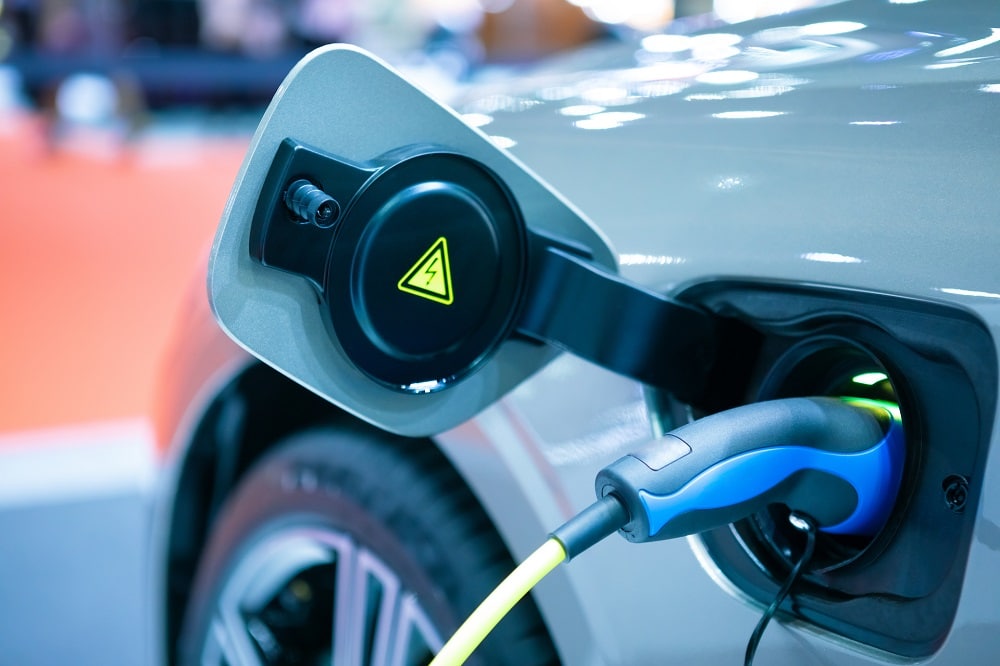The electric vehicle market has grown rapidly in the last few years and is expected to evolve significantly in the coming years. On one hand, there is a constant influx of innovative solutions and novel technologies, making electric vehicles more affordable and accessible. On the other hand, consumers are becoming conscious of the environmental problems associated with energy-intensive, fossil-fuel-powered vehicles. As a result, EV mobility has gained mainstream prominence and adoption in the industry. In this blog, we have listed some of the top EV mobility trends for 2023.
Key Trends Shaping the Future of EV Mobility in 2023
1. Rise in the adoption of EVs:
Of the 73.8 million vehicles sold in 2022, a whopping 10.5 million (14.2%) were electric cars, setting new records despite a slowdown in car sales. It was a 55% increase over the electric car sales in 2021. In 2017, only one out of 70 cars was electric, and today, the IEA report shows that one out of seven is electric. This is proof enough that electric vehicles are gaining momentum across the world.
Beyond that, the electric commercial market encompassing buses, vans, trucks, etc., is estimated to grow at a CAGR of 9.51% between 2021 and 2030. The zero-emission trucks and buses are expected to replace gasoline- and diesel-powered vehicles by leveraging the enhancements in battery capacity and charging infrastructure. It is critical to note at this juncture that more than 100 governments have signed to phase out fossil-fuel-based commercial vehicles by 2035 and replace them with zero-emission cars and vans at the COPS summit held in the latter part of 2021.
2. Battery longevity and enhancements:
EV batteries have advanced tremendously, and innovative solutions have reduced electric car battery prices by almost 85% between 2010 and 2021. Solid-state battery technology is slowly gaining traction in the EV battery industry in 2023, and this is expected to offer quicker charging, enhanced safety, reduced dependencies on critical metals, and higher energy density than traditional lithium-ion batteries. Energy density plays a crucial role in improving the range and longevity of electric vehicles.
The evolving electric car battery technologies are expected to increase the affordability and economic viability of electric vehicles as well as enhance the range and reduce the charging time. This is expected to address range anxiety, which is commonly referred to as a major concern hindering the adoption of electric vehicles. A Deloitte survey showed that 43% of people expect a range of at least 200-300 miles before deciding to purchase an electric vehicle.
3. High investments in EV infrastructure:
With rising concerns about climate change and its threat to the sustenance of human lives and biodiversity, countries are focusing on emission reduction. They intend to reduce their dependence on fossil fuels and meet the NDC (Nationally Determined Contribution) targets that they had specified to the United Nations.
The transport sector accounts for 37% of global carbon emissions, and so governments across the world have made concerted efforts to drive investments into the EV infrastructure and eventually, electric car sales. Their main focus is to install rapid charging stations to make charging more accessible and convenient. This is expected to reduce the charging time and make it possible for drivers to charge their vehicles during long trips.
Such enhancements are expected to promote a rise in the adoption of electric fleets and commercial vehicles as well as micro-mobile options like e-cars, e-bikes, e-scooters, etc. Governments are also subsidizing the development of charging stations and facilities, which is expected to promote the rapid adoption of electric vehicles in 2023.
4. Electric Mobility as a Service (eMaaS):
Electric Mobility as a Service is an innovative business model that aims to offer on-demand mobility solutions and services to promote sustainable transportation. Businesses are spearheading to build an integrated transportation ecosystem by leveraging the best of both worlds, electric mobility and digital transformation.
Such innovative solutions promote shared e-mobility and encourage people to use electric vehicles without owning one. This reduces the number of cars on the road and congestion, eventually reducing pollution and vehicle-based emission. eMaaS solutions also enhance the affordability of electric vehicles as eMaaS solutions are mostly subscription-based, and people ought to pay only for their usage.
For effective tips on creating a sustainable car rental company, read this.
5. Rising fuel prices give EVs a competitive edge:
ICE (Internal Combustion Engine) vehicles use gasoline or diesel, whose prices fluctuate depending on geopolitical factors and supply and demand dynamics in the international arena. It must be noted that with the recent changes in the geopolitical landscape, the OPEC (Organization of the Petroleum Exporting Countries) has decided to reduce crude oil production, and the member countries are looking to diversify their economies. This is expected to increase the price of fossil fuels.
EVs run on electricity, whose prices are more stable and lower than the fossil-fuels. The Advanced Vehicle Testing Activity Database shows that fossil fuels like gasoline cost $3.50 per gallon for every 45 mph, while it is just 7.8 cents a mile with electric vehicles. All these make electric vehicles competitive compared to ICE vehicles, thereby allowing people to save more on operational and maintenance costs.
6. IoT, AI, and cloud will disrupt battery management:
Rapid burgeoning technologies like Artificial Intelligence, the Internet of Things, Cloud computing, etc., are expected to disrupt battery management and electric mobility. These technologies have the power and potential to automate the battery management and control process.
By leveraging artificial intelligence, the e-mobility industry shall automate various processes, optimize routes and promote optimal utilization of charging stations. Mobile and web apps built based on AI, cloud and IoT could help EV owners and drivers figure out the best time for charging and discharging. Deep learning algorithms and computer vision could help identify the battery’s health and notify the user of cell damage and battery anomalies. This helps mitigate the fear of fire while enhancing the systems’ safety, reliability and security.
7. Additive manufacturing promotes customization and efficiency:
Traditionally, vehicle manufacturing involved complicated models and expensive components, molds and machines. The evolution of 3D printing and other additive manufacturing methods has the power to promote the development of sustainable component alternatives while reducing wastage.
OEM startups and companies are using advanced 3D printing techniques to design and build delicate components of electric vehicles including exhausts, door handles, etc. Such technologies enhance cost efficiency in designing and developing new components and vehicle parts. Some companies are using 3D printing techniques to accelerate the designing and building of solid-state batteries, which are expected to revolutionize the electric vehicle mobility market. Hence, upcoming additive manufacturing techniques are sure to remain one of the major EV mobility trends in 2023.
8. Innovative EV financing solutions:
While automakers are on a spree to enhance battery efficiency and reduce the costs of electric vehicles, fintech companies and startups are rolling out several options to promote the sales and usage of EVs. This includes lower interest rates, extended loan terms and sometimes direct financial assistance.
EV manufacturers are also offering discounts to dealers to encourage them to promote the sale of electric vehicles. Automotive dealers transfer this to the end consumers through cashback offers, bonuses, discounts, etc. Such green loans, incentives and financing options have gained significance in urban areas while they are yet to seep through the semi-urban and rural markets. Innovative financing solutions are expected to drive electric car sales and adoption in 2023.
9. Evolution of smart-grid technologies:
The rising energy prices and shortages have instilled a sense of nervousness about the grid’s capabilities to meet the rise in energy demands from charging electric vehicles. But governments are working out strategies to decarbonize the energy grids and make them more efficient. Smart grids facilitate introducing and integrating power from renewable energy sources like solar, hydro, wind, etc. They also promote seamless EV charging facilities and infrastructure integration into existing grids.
Besides, smart grids promote innovative programs that incentivize EV owners to charge their vehicles during off-peak hours when there is a lower demand on the grid or when there is a supply of renewable energy. In essence, smart grids reduce the strain on the electrical infrastructure and accelerate the adoption of electric vehicles.
For actionable tips to enhance fleet management, read this.
10 . Vehicle-to-Grid (V2X) Technology:
Lastly, a significant advantage of smart grids is that they promote bidirectional charging. The vehicle-to-grid, or vehicle-to-everything technology, allows EVs to draw energy from grids and transfer it back into the grid when the vehicle is not in use.
Along similar lines, several technologies like vehicle-to-home (V2H), vehicle-to-farm (V2F), and vehicle-to-building (V2B) are evolving to help buildings and farms access energy through EVs. Such technologies help EV owners charge their vehicles when needed and discharge the remaining power when not operating them. This reduces the burden on the load and power disruption.
Conclusion
In conclusion, a combination of technological factors, environmental awareness, innovative financing options and Mobility-as-a-Service (MaaS) solutions are expected to shape the EV mobility trends in 2023.
How RENTALL Supports the Growth of the EV Market
At RENTALL, one of our core goals as a business is to help the automobile industry become more sustainable. As a result, we are extremely passionate about creating a platform that delivers the best results possible for any business looking to offer electric vehicle rental.
RENTALL’s electric vehicle rental solution is a cloud-based SaaS platform designed to automate fleet management. The RENTALL platform has been designed with rental operators to ensure that all the necessary requirements are taken care of and is constantly developing to stay at the forefront of technology and industry trends.
Our electric vehicle rental platform comes with a range of benefits that include the following –
● Cloud-Based: Log in and manage your fleet from anywhere, anytime
● Alerts: Real-time alerts from customer inquiries to maintenance
● Mobile App: Manage your reservations from anywhere via iOS or Android
● Reservations Plugin: Integrate directly with your website to monitor all reservations
● Reports: Get detailed reporting on your business in real-time
● Customer Management: All customer information managed securely in one place
Over and above these features, we have 30+ add-ons available to maximize your performance, no matter what your business goals are. In short, from consumer car rental to commercial van rental, RENTALL has been designed to optimize all your operations.
To learn more about how RENTALL can deliver improved operational efficiencies,
first-class customer service and increased profitability for your car rental business, contact us here. Alternatively, you can also connect with us at +1 888 628 6827 or info@rentallsoftware.com for a consultation.






























